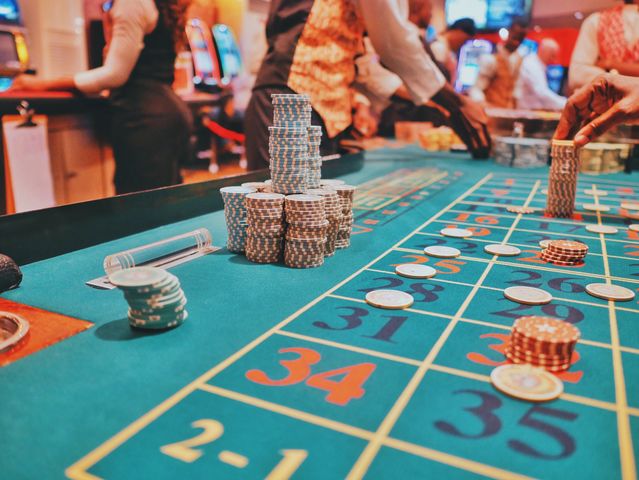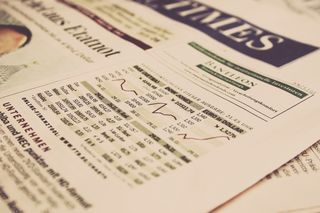Dopamine
Traders and Investors: Born to Run
Why traders should train like athletes
Posted December 13, 2018

In the immortal words of the Boss, Bruce Springsteen, ‘In the day we sweat it out on the streets of a runaway American dream’. And Wall Street traders are, funnily enough, sweating it out, on the Street, day after day, as they trade.
Fascinatingly, physiology theory shows us that if traders train like athletes, they stand a far better chance of maximizing their P&L. Here’s the science behind why working out Wall Street might offer the finance community it's most profitable New Year’s Resolution for 2019.
Traders: Train like Athletes to Maximise P&L
For traders, training like an athlete makes perfect sense – the cardiovascular tone of a trader’s body has been seen to increase following a day of trading in volatile markets. Similarly, Cambridge University professor John Coates reported recently that ‘Trading, it is not often appreciated, is a physical activity…high testosterone levels or increased androgenic effects, for example, can increase vigilance and visuo-motor skills such as scanning and speed of reactions…qualities that may help traders to spot and trade price discrepancies before others arbitrage them away.' It has even been said by some finance scholars that the endocrine system might prove to be the missing link in a new field of neuroscience and economics, where financial markets events can be connected to brain processes.

As it turns out, physical fitness is indispensable to traders seeking to maximize their P&L. Here's why.
Options & Opioids
Exercise is an opioid. It improves mood, mediates anger and aggression, and enhances cognitive reasoning, executive and top-down cognitive control - all crucial abilities for traders-or any individuals- who need to execute fast, intelligent decisions (e.g. in a volatile financial market). Exercise limits feelings of panic when we are fearful via raising dopamine and serotonin and lowering cortisol – a crucial safeguard for any trader operating in, say, a major market downswing – which is perhaps why executives who exercised regularly were found to be able to cope with life-changing stress far better if they were regular exercisers. Exercise also increases serotonin, partly because of its role in heightening levels of tryptophan (a serotonin precursor)-a deficiency in which has been linked to higher suicide rates. Traders burn out at legendary rates; maximizing tryptophan and serotonin levels offers one crucial protection against the likelihood of that happening, ultimately lengthening the duration and quality of any trading career.

Lift Heavy to Trade Smart
Working out can enable traders to trade more intelligently, by lowering cognitive dissonance, strengthening executive and top-down control and leaving us less exposed to the phenomenon of hot cognition (a tendency for reasoning to be governed far more strongly by the emotional, as opposed to rational, area of the brain). Avoiding hubris can be crucial to maximizing long-term P&L, which is, itself, made easier to ignore when our brains are already high on anandamine (a cannabinoid increased by strength training, that leads to a natural feeling of bliss).
Trading Highs
Research tells us that some traders self-select into a front-office, finance role due to their ‘thrill junkie’ personality – a trait potentially exacerbated by frequent exposure to trading, and made worse by a greater exposure to the onset of gambling tendencies and addictions due to the nature of the role. Many traders subsequently risk treading a precarious line between trading more for the pursuit of a dopamine high than for the rational pursuit of profit, and for traders to subsequently view money/trades as a currency to use to get high, where the boundary between trading and gambling blurs significantly and dangerously for that individual.

This perhaps offers the most persuasive reason for why traders should hit the gym: exercise provides the most powerful natural high available to man, boosting phenethylamine (a stimulant), anandamine (a cannabinoid), endorphins (an opioid), serotonin, norepinephrine and dopamine levels alongside BDNF (brain-derived neurotrophic factor). The combined result is a boost to brain power and emotional control and a significantly lowered vulnerability to gambling/dopamine-seeking impulses – all for the price of a gym membership.
Another way in which exercise exerts a powerful combative effect on addictive behavior is by altering FosB or FosC (transcriptional regulators of stress and antidepressant responses) immunoreactivity in the striatum and in other parts of the brains’ reward system (Fos-B expression in the nucleus accumbens is also crucial in improving our resilience to stress). So alongside that reduction in gambling-impulse activity, traders will benefit from an ability to bounce back harder and faster from debilitating market rallies and crashes that will lead the less physically healthy to burnout and adrenal fatigue. And that ultimately leads to smarter trades, and a longer, more satisfying career trajectory.

Profit can be Contagious
Extreme sports, charity sports challenges, team skiing events and other offsite events can really bond a trading team as undertaking a physical challenge together hugely increases the bonding hormone oxytocin, whilst excitation-transfer- the biological transfer of emotion – can strengthen
returns indirectly if a collective testosterone or dopamine response is powerful enough to power that team positively through rallies, volatility and crashes. If the team would genuinely value a collective, physical pursuit, the indirect effects on P&L could be substantial.

Working Out Wall Street
Ultimately, working out regularly creates an opioid, amphetamine-like high, restores damage caused by over-exposure to stress hormones, promotes rational decision-making, and provides the energy and cognitive speed needed for quick, intelligent trading to occur. These outcomes can translate to better, more rational trading and ultimately optimization of P&L – so if you are a trader looking for a new year’s resolution, you could do a lot worse than adding a gym membership to the top of your Christmas list.
This article is an adapted excerpt taken from my 2018 book 'The Physiology of Emotional & Irrational Investing: Causes & Solutions' (Routledge).




